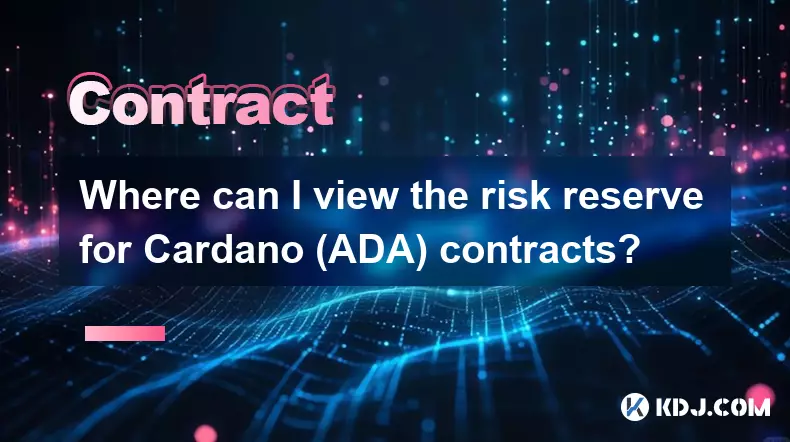-
 bitcoin
bitcoin $112195.049338 USD
2.42% -
 ethereum
ethereum $4124.915858 USD
2.81% -
 tether
tether $1.000570 USD
0.02% -
 xrp
xrp $2.861568 USD
2.25% -
 bnb
bnb $1000.346670 USD
3.04% -
 solana
solana $209.070819 USD
3.38% -
 usd-coin
usd-coin $0.999870 USD
0.02% -
 dogecoin
dogecoin $0.235379 USD
2.65% -
 tron
tron $0.335681 USD
-0.20% -
 cardano
cardano $0.803501 USD
3.38% -
 hyperliquid
hyperliquid $47.120881 USD
3.56% -
 chainlink
chainlink $21.501300 USD
3.44% -
 ethena-usde
ethena-usde $1.000571 USD
0.02% -
 avalanche
avalanche $29.793378 USD
3.62% -
 stellar
stellar $0.366964 USD
2.42%
Precautions for Upbit leverage trading
Traders engaging in leverage trading on Upbit should prioritize understanding the risks, selecting an appropriate leverage ratio, and employing risk management strategies like using stop-loss orders to mitigate potential losses.
Nov 14, 2024 at 06:23 pm

Upbit is one of the leading cryptocurrency exchanges in the world, offering a wide range of trading options, including leverage trading. Leverage trading allows traders to borrow funds from the exchange to increase their trading positions, potentially amplifying their profits. However, leverage trading also carries significant risks, and traders should exercise caution when using it. This article provides a comprehensive guide to the precautions that traders should take when engaging in leverage trading on Upbit.
1. Understand the RisksThe primary precaution for Upbit leverage trading is to fully understand the risks involved. Leverage trading can magnify both profits and losses, and traders should only use it if they are prepared to accept the potential consequences. The following are some of the key risks associated with leverage trading:
- Liquidation: If the market moves against a trader's position, the exchange may liquidate the position to cover the borrowed funds. This can result in the loss of the entire initial investment.
- Margin Calls: If the value of a trader's position falls below a certain threshold, the exchange may issue a margin call, requiring the trader to deposit additional funds or reduce their position size. Failure to meet a margin call can result in liquidation.
- Volatility: Cryptocurrency markets are highly volatile, and prices can fluctuate rapidly. This volatility can make it difficult to predict market movements and can increase the risk of liquidation.
The leverage ratio is the amount of borrowed funds that a trader uses to increase their position size. Upbit offers a range of leverage ratios, from 2x to 20x. The higher the leverage ratio, the greater the potential profits and risks. Traders should carefully consider their risk tolerance and trading experience when choosing a leverage ratio.
3. Use Stop-Loss OrdersStop-loss orders are a valuable tool for managing risk in leverage trading. A stop-loss order is an instruction to the exchange to automatically sell a position at a specified price. This helps to limit losses in the event that the market moves against a trader's position.
4. Monitor Position SizeTraders should carefully monitor the size of their positions relative to their account balance. Overleveraging can significantly increase the risk of liquidation. Traders should ensure that their position size is appropriate for their risk tolerance and financial situation.
5. Use Take-Profit OrdersTake-profit orders are another useful tool for managing risk in leverage trading. A take-profit order is an instruction to the exchange to automatically sell a position at a specified price. This helps to lock in profits and prevent them from being wiped out by a market reversal.
6. Practice Risk ManagementRisk management is essential for successful leverage trading. Traders should develop a comprehensive risk management plan that includes the following elements:
- Position sizing: Determine the appropriate position size based on risk tolerance and account balance.
- Stop-loss orders: Use stop-loss orders to limit losses and prevent liquidation.
- Take-profit orders: Use take-profit orders to lock in profits and prevent them from being wiped out.
- Trailing stop orders: Use trailing stop orders to move stop-loss orders in line with market movements.
- Hedging: Use hedging strategies to reduce the risk of losses.
Leverage trading is a complex and risky undertaking. Traders should thoroughly educate themselves on the subject before engaging in it. This includes understanding the risks, choosing an appropriate leverage ratio, using stop-loss and take-profit orders, and practicing risk management.
8. Consider Trading PsychologyLeverage trading can be emotionally challenging. Traders should be aware of their own trading psychology and avoid making decisions based on fear or greed. It is important to stay calm and disciplined, and to follow a well-defined trading plan.
Disclaimer:info@kdj.com
The information provided is not trading advice. kdj.com does not assume any responsibility for any investments made based on the information provided in this article. Cryptocurrencies are highly volatile and it is highly recommended that you invest with caution after thorough research!
If you believe that the content used on this website infringes your copyright, please contact us immediately (info@kdj.com) and we will delete it promptly.
- Citi's Token Services: Clearing the Path for 24/7 Global Payments
- 2025-09-30 04:45:16
- ADA, Mutuum Finance, and Cardano Pattern: Navigating Crypto Opportunities Like a New Yorker
- 2025-09-30 04:45:16
- Bitcoin, XRP, and 250x Gains: Is MAGACOIN FINANCE the Next Big Thing?
- 2025-09-30 04:50:01
- Heada, Shiba inu, and Blockddddddded Faucet: A Crypto Trifecta
- 2025-09-30 05:05:11
- Citi's Token Services and 24/7 USD Clearing: A New Era for Global Payments
- 2025-09-30 04:50:01
- Uniswap (UNI) Price Check: Navigating Channel Targets and Market Sentiment
- 2025-09-30 05:05:11
Related knowledge

What is the maximum leverage supported by Cardano (ADA) contracts?
Sep 30,2025 at 03:37am
Understanding Leverage in ADA Derivatives Trading1. Leverage in cryptocurrency futures and perpetual contracts allows traders to control larger positi...

How do I use the scheduled order feature in Cardano (ADA) contracts?
Sep 28,2025 at 10:18pm
Understanding Scheduled Orders in Cardano Smart ContractsCardano operates on a proof-of-stakes consensus mechanism and uses the Plutus scripting langu...

Where can I view the risk reserve for Cardano (ADA) contracts?
Sep 29,2025 at 09:19pm
Risk Reserve Overview in Cardano (ADA) Ecosystem1. The concept of a risk reserve within the Cardano blockchain does not align with traditional central...

How do I enable the "scalping-only" mode for Cardano (ADA) contracts?
Sep 24,2025 at 03:19am
Understanding Scalping Strategies in Crypto Derivatives1. Scalping in cryptocurrency trading refers to executing multiple short-term trades within min...

What is the settlement time for Cardano (ADA) contracts?
Sep 28,2025 at 04:18am
Understanding Cardano's Contract Settlement Mechanism1. Cardano operates on a proof-of-stake consensus model known as Ouroboros, which fundamentally i...

How do I add margin to Cardano (ADA) contracts?
Sep 27,2025 at 07:54pm
Understanding Margin in Cardano (ADA) Smart ContractsCardano operates on a proof-of-stake blockchain that supports smart contracts through its Plutus ...

What is the maximum leverage supported by Cardano (ADA) contracts?
Sep 30,2025 at 03:37am
Understanding Leverage in ADA Derivatives Trading1. Leverage in cryptocurrency futures and perpetual contracts allows traders to control larger positi...

How do I use the scheduled order feature in Cardano (ADA) contracts?
Sep 28,2025 at 10:18pm
Understanding Scheduled Orders in Cardano Smart ContractsCardano operates on a proof-of-stakes consensus mechanism and uses the Plutus scripting langu...

Where can I view the risk reserve for Cardano (ADA) contracts?
Sep 29,2025 at 09:19pm
Risk Reserve Overview in Cardano (ADA) Ecosystem1. The concept of a risk reserve within the Cardano blockchain does not align with traditional central...

How do I enable the "scalping-only" mode for Cardano (ADA) contracts?
Sep 24,2025 at 03:19am
Understanding Scalping Strategies in Crypto Derivatives1. Scalping in cryptocurrency trading refers to executing multiple short-term trades within min...

What is the settlement time for Cardano (ADA) contracts?
Sep 28,2025 at 04:18am
Understanding Cardano's Contract Settlement Mechanism1. Cardano operates on a proof-of-stake consensus model known as Ouroboros, which fundamentally i...

How do I add margin to Cardano (ADA) contracts?
Sep 27,2025 at 07:54pm
Understanding Margin in Cardano (ADA) Smart ContractsCardano operates on a proof-of-stake blockchain that supports smart contracts through its Plutus ...
See all articles


























![[Pycoin] PI Coin -Shocking Listance of Pycoin?! 'Rebellion' This time ... Pay attention to #paikoin [Pycoin] PI Coin -Shocking Listance of Pycoin?! 'Rebellion' This time ... Pay attention to #paikoin](/uploads/2025/09/29/cryptocurrencies-news/videos/pycoin-pi-coin-shocking-listance-pycoin-rebellion-time-pay-attention-paikoin/68da82f23cec1_image_500_375.webp)















































